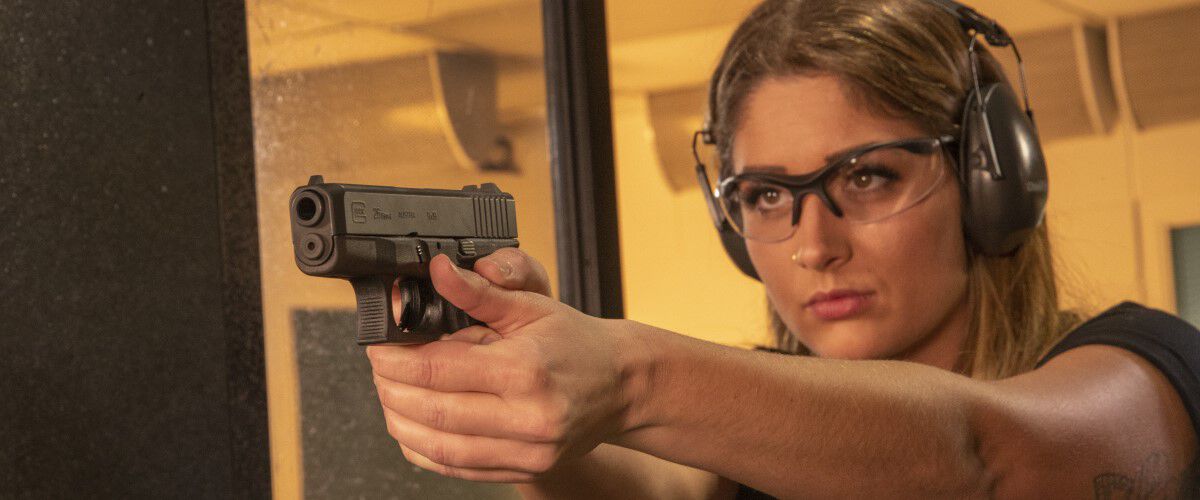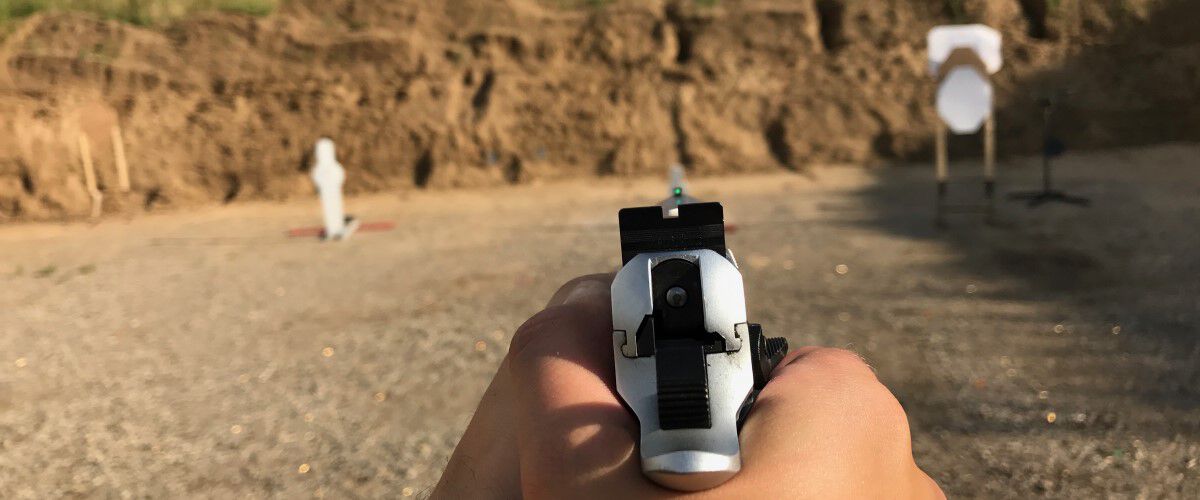Take A Stand

Nobody wants to be in a gunfight, but you have to be ready for one if you make the decision to carry. According to former Marine and current SWAT Team Leader George Walker, nothing trumps preparedness and developing a system you can use when a worst-case-scenario arises. A personal-defense situation requires steps, and he has broken them down into a series of seven.
1. Stance
While Walker notes practicing with feet shoulder-width to shoulder-width-and-a-half apart is important, he also points out that defense situations often happen fast. The encounter might be close, and this is where muscle memory should take over. Your feet should automatically move to the correct position to create a stable platform. There should be a slight forward bend at the V of the ribcage, and the stance should be strong.
2. Draw
Walker teaches a five-step draw. Your non-dominant hand lifts up your cover garment or sweeps it out of the way. The draw-hand moves toward the backstrap of the firearm. Be sure to stay high in the backstrap. Coming up out of the holster, you rock 90 degrees. This is important, especially important for a close-contact situation. With the gun pivoting 90 degrees, a quick shot can be made.
As the firearm comes mid-body, the hands start to come together. Walker prefers a thumb-forward grip. This grip puts the gun deep in the hands and locks it into a vice, mitigating felt recoil. Now move the finger to the trigger, acquire the sights and deliver a lethal round.
3. Sight Alignment
Walker preaches same height, same light. He wants equal distance left and right and up and down and references his front sight to his rear sight. Then, he imagines a laser coming out of the middle of his retina going straight out. That laser should run 100 percent perpendicular with reference to the rear sight to the front sight to the target.

4. Sight Picture
Shoot with both eyes open if possible. This gives a bigger field of view. If a longer shot is needed, shooters often squint a bit, and this is fine, but for a close encounter, eyes open. You should have a clear front sight and a slightly blurred rear sight. Again, most self-defense situations will be up-close encounters. Walker doesn’t mind a big-dot front sight. They are ideal for close-range encounters but will cover the target more at an extended distance.
5. Trigger Press
“Trigger press is everything,” Walker says, taking a long, deep breath. He teaches a smooth, consistent trigger press. Keep this smooth and consistent—pull from the time the trigger is engaged until the gun goes boom. Speed will come with time, but consistency has to come first. Once the gun fires and the slack goes out of the trigger, don’t move your finger any further. This is a waste of time and movement. Don’t let the finger off the trigger and come back in. The middle of the finger pad should stay engaged.
6. Follow Through
As soon as the trigger resets, get your sights back on target. Don’t let the firearm down or re-holster. You will need to track the target. Don’t scan straight to the ground. Your eyes should stay up. Once the shot breaks, where is the target now? You need to know.
7. Magazine Changes
If you run dry and have to make a mag change, those magazines need to be in familiar position. This position should never change. Walker carries mags forward in a magazine carrier. Dump the first magazine, insert the second and use your slide-lock lever as a slide release or come up over the top of the slide, rack it to the rear, and come back on target.